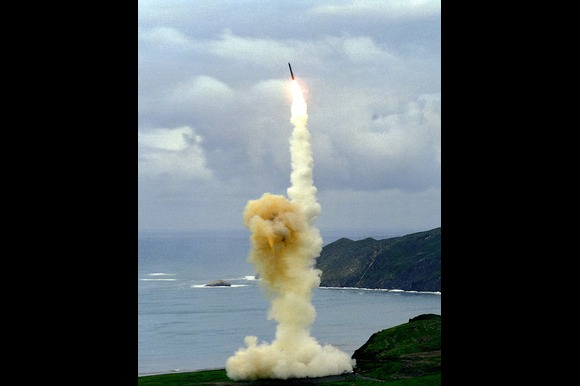
Wikipedia
In a move aimed at strengthening its air defence capabilities, Taiwan has successfully conducted the first live-fire test of its indigenous Land Sword II surface-to-air missile (SAM) system, the Ministry of National Defence (MND) announced on Tuesday.
Details of the new air defence system were released in an official post on X (formerly Twitter), where the MND highlighted the Land Sword II’s advanced ability to counter a variety of aerial threats, significantly boosting the protection of Taiwan’s armed forces.
“The Land Sword II makes its live-fire debut. This SAM system is capable of countering diverse aerial threats and significantly enhances force protection for #ROCArmy,” the ministry posted, alongside videos showing the missile being launched.
The Land Sword II trial comes on the heels of another major defence milestone — the live-firing of the U.S.-supplied High Mobility Artillery Rocket System (HIMARS), which took place on Monday at Jiupeng Base in Pingtung County’s Manjhou Township. According to Focus Taiwan, the drill was carried out by the 58th Artillery Command of Taiwan’s Army.
The HIMARS system is capable of carrying either a pod of six 227mm rockets or a single Army Tactical Missile System (ATACMS) missile, the latter with a range of up to 300 kilometers. During Monday’s exercise, 11 launch vehicles fired a total of 33 rockets, with each vehicle discharging three rounds. While the military did not disclose specific performance data from the drill, Focus Taiwan reported that U.S. personnel were present to assist with any technical challenges.
Taiwan has procured 29 HIMARS launchers from the United States. The first shipment of 11 units arrived in 2024, with the remaining 18 systems scheduled for early delivery in 2025 — moved up from the originally planned 2027 timeline, according to a Ministry of National Defence report submitted to the Legislative Yuan in March.
The MND also shared footage from the HIMARS test on X, writing: “#HIMARS debuts in #Taiwan, showcasing rapid deployment and next-generation strike capabilities.”
These defence exercises carry added weight amid increasing military activity by China near Taiwan. On Wednesday, Taiwan’s defence ministry reported detecting 35 sorties by China’s People’s Liberation Army (PLA) aircraft, along with the presence of eight PLA Navy vessels and two additional official Chinese ships operating around the island.
The drills and weapons demonstrations come in the context of heightened geopolitical tensions across the Taiwan Strait. Taiwan, formally known as the Republic of China (ROC), maintains its own government, military, and economy, functioning as a de facto independent nation. However,
China regards Taiwan as a breakaway province and remains firmly committed to its “One China” policy, which claims there is only one sovereign Chinese state with Beijing as its capital.
Beijing has repeatedly stated its ambition to achieve reunification with Taiwan, applying consistent diplomatic, economic, and military pressure in an effort to isolate the island internationally and weaken its defences.
Taiwan’s latest military drills and weapons displays reflect a strategic shift toward bolstering both deterrence and combat readiness in the face of persistent threats from mainland China.




